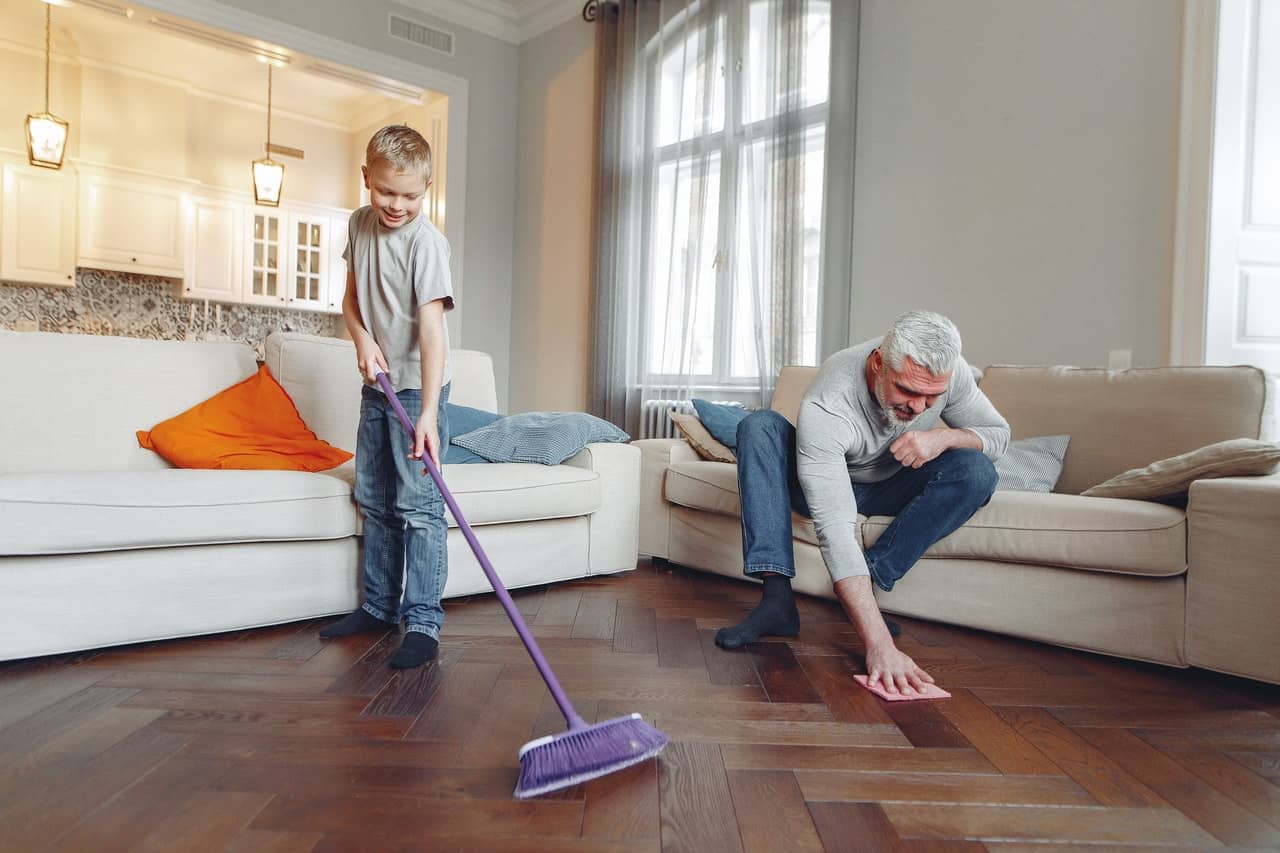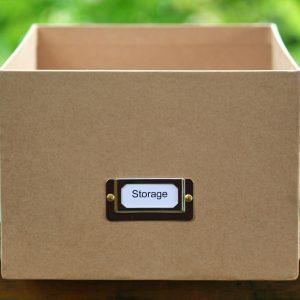Moving into a new home can be an exciting, yet stressful time. The space is full of so many possibilities. To really get things started off right, a deep clean should be pretty high on your to-do list. Unless construction on the home just finished, and you’re the first-ever occupants, chances are, the new home isn’t as clean as you’d like to think it is.
The people who lived there before you did – whether as owners or renters – definitely left some dirt behind, even if they didn’t mean to. Once you start moving in your furniture and other belongings, you’ll just have to move stuff out of the way to clean, so if possible, give yourself a few days before you actually bring the moving truck to clean without anything in your way.
House cleaning tips to follow for your new house
Here’s how to clean your new house before moving in. You’ll appreciate it on moving day because everything will be much easier.
What you will need to clean a new house
Since nothing is in the home, you’ll need to make sure you have all the tools and materials you need before you get started.
- Vacuum with hoses and attachments
- Broom and dustpan
- Mop and bucket
- Step ladder
- Toilet brush
- Sponges
- Spray bottle
- Cleaning solutions
- All-purpose cleaner
- Glass cleaner
- Bathroom cleaner
- Floor cleaner
- Oven cleaner
- Degreaser
- Toilet cleaner
- Carpet cleaner
- Baking soda
- Chlorine-free bleach
- Cleaning brushes
- Cleaning cloths
- Newspaper or brown paper bags
- Shelf lining paper
- Rubber gloves
- Pillowcases
- Bags for dirty rags or trash
Start high and work your way down in every room
Dust from the higher areas of the home will undoubtedly fall down and ruin your nice clean floors if you work any other way. Start by cleaning the light fixtures or ceiling fans in the room because these are much less likely to be cleaned any other time. And any dust that collects there works its way into your home over time.
To clean the ceiling fan, place an old pillowcase over each blade as you wipe, moving from the inside to the outside. This will help prevent a dust storm. Turn to the vacuum and attachments to clean any hard-to-reach places.
Clean the bathrooms
While many will recommend starting in the kitchen, it’s a good idea to start with one of the bathrooms, since you’ll likely have to use one at some point while you’re cleaning.
Vacuum blinds, shades, or curtains. Use a mixture of dish detergent and water to spot clean any leftover dirt.
Clean the windows with glass cleaner and use a general-purpose cleaner on the windowsills. If you spot mold, use a bleach cleaner. Wipe down the inside and outside of any cabinets, drawers, and linen closet space.
Clean the tub and shower. If it appears to be fairly clean, you can use a general-purpose cleaner. If you’re dealing with hard water stains or soap scum you’ll need something a bit more targeted. Mix one part vinegar and one part dish detergent in a spray bottle. Apply liberally and let sit for 30 minutes while you clean other areas. Scrub and rinse clean with water. Avoid abrasive cleaners on any newly glazed tubs.
Disinfect the toilet. Use a toilet brush to scrub the inside of the toilet and sponges to clean the back, outside, and handles.
Optionally, clean the toilet tank to reduce mildew and rust. Do this by pouring vinegar directly into the tank’s water and allow the solution to sit there for 12 hours. Flush a few times to remove the vinegar. Turn off the water valve at the back of the tank and flush the toilet. While the tank is empty, scrub the inside of the tank with an all-purpose cleaning solution. Turn the water back on and flush until the water is clear in the tank and the bowl.
Clean the sink and counters. Wipe down the sink, faucet, and counters with an all-purpose cleaner.
Clean the mirror with a glass cleaner. Use a newspaper or a squeegee to prevent streaking.
Clean the walls, baseboards, and light switches. Wipe these areas down with an all-purpose cleaning product.
Clean the doors and door knobs. Since the doorknobs are a high-touch surface, consider using a disinfectant on these areas.
Clean the kitchen
Start by unplugging the refrigerator and letting it warm up. It’s easier to clean a refrigerator that’s not cold, and you won’t waste power cooling the rest of the home with the refrigerator door open while you work.
While you wait for the refrigerator to warm up, open the oven. Remove the racks. Spray it down a commercial oven cleaning product or a mixture of baking soda and water. Allow it to sit for at least 15 minutes before starting to clean.
While the cleaning mixture sits in the oven, remove the elements and drip pans. Soak the racks and drip pans in a sink full of warm, soapy, water.
Clean inside the oven. If it is a self-cleaning model, run the cycle.
Clean the range hood – both inside and out. Cover the top of the range with a sheet of newspaper or brown paper bags to protect it from any drips while cleaning the hood.
If a regular cleaner isn’t getting the job done, opt for a degreaser. Check the filter and clean or replace it if needed. If the stove hood features a light, check to make sure that it works and replace the bulb if needed.
Clean the top and front of the stove. Wipe down the front and top of the stove with the appropriate cleaner. If you have a flat glass top stove, use a cleaning solution specifically for this. Clean around the knobs.
Move the stove away from the wall to clean the sides. This is also the time to clean the warming drawer, underneath the stove, and behind it.
Clean the oven racks and drip pans. Place them back in and re-install the elements.
Clean the refrigerator and freezer. Remove racks and drawers. Clean the inside of the unit. Soak racks and drawers in a sink full of warm soapy water. Once everything is clean and dry, put the racks and drawers back into place.
Wipe down the front and sides of the refrigerator. Before you plug it back in, clean from behind it. Plug it in and slide it back into place. Leave a bit of space between the wall and the back of the unit to allow for adequate airflow.
Clean the kitchen cabinets and drawers. Wipe down the insides and outsides to remove dust and dirt. If desired, add shelving paper to protect the inside of the cabinets.
Wipe down the counters using an all-purpose cleaner, unless you’re working with stone countertops.
Spray the sink with a mixture of bleach and water. Let it sit for a few minutes, and then rinse. If you have a garbage disposal, mix baking soda with water and pour it down the drain. Run a small stream of water into the sink with the disposal and run the disposal for a few minutes to clean it.
If you have a dishwasher, remove the racks and wipe down the inside. Run an empty cycle with a dishwasher cleaner to help remove odors. If there’s any lingering dirt in the bottom of the dishwasher after the cycle completes, remove the bottom rack and clean it with a vinegar and water solution.
Clean the rest of the space
Starting from the top and working your way down, clean the living room, bedrooms, and any other areas of the home. Clean the light fixtures, walls, windows, baseboards, light switches, etc. as you’ve done in the other areas. Wipe down the walls and shelving units in the closets.
Cleaning the floors
When everything else is done, it’s time to clean the floors in every room. Either sweep and mop or vacuum, depending on the type of floor in the room. When cleaning floors, always use a solution that matches the floor type. If you’re cleaning real hardwood floors, use a mild wood soap, and if you’re cleaning stone or tile, avoid general-purpose cleaners.
Start in the corner furthest from the door, then work your way back so that as you mop, you do not have to walk back over an area you’ve already cleaned. Work toward either the front or the back door, based on how you plan to leave the home after you’ve finished mopping the last room.
If you have carpets in your home, you may wish to rent a carpet cleaner and steam clean them yourself, or hire a professional carpet cleaning company to do it for you. If you know the carpets have recently been steamed, vacuuming is usually enough.
Conclusion
If you’re limited on time but want to be sure your place is as clean as possible before you move in, consider hiring a professional housekeeper to come in and take care of it for you. In either case, your home will be nice and clean when you start bringing things in. Once you unpack, you can clean up your mess as you go. When you’re all settled, you’ll be able to stick to a regular cleaning schedule that keeps your home in top shape all the time.





